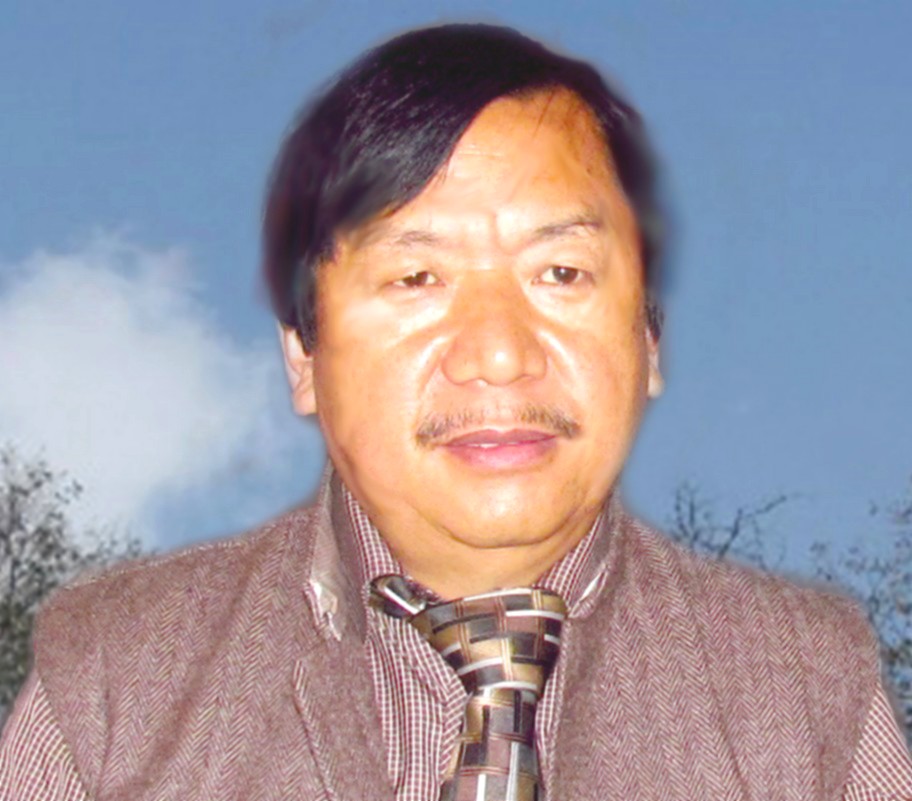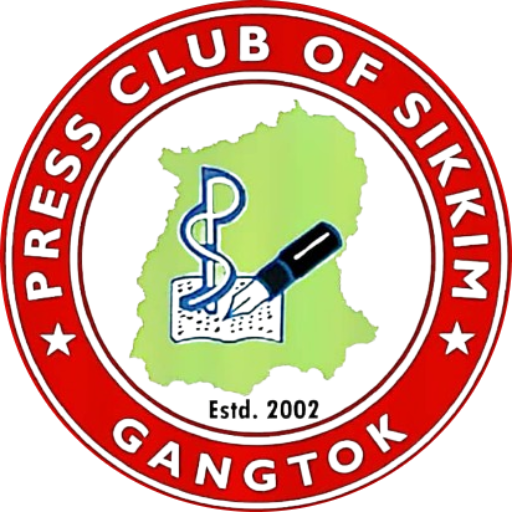
At the beginning of Indian Nepali journalism, the concept and role of literature and journalism
were considered similar and complimentary to each other, hence no clear-cut distinction between
the two was there.
In Sikkim too, the concept was not very different. Kanchenjunga Nepali
Monthly, the first news magazine published in Sikkim in 1957 and edited by Shri Kashiraj
Pradhan also more or less influenced by literature. Nepali journalism in Sikkim was started by
the publication of Himalibela, Sikkim Awaaj and later Dainik Awaaj published from Gangtok.
While Sikkim Aaaj, Aaja ko Sikkim published for some years, the then-popular Nepali weekly,
Himalibela is still published daily from Gangtok. Except for the government newspaper Sikkim
Herald only Himalibela and then Sikkim Awaaj, later on, Dainik Aawaj were being published in
1977-79. At that time Sikkim Border News & Views was being published and edited by Shri P.S.
Nirash and later by Mrs. Santosh Nirash.
Sikkim Express, English, and Himalibela were the two prominent weekly newspapers being published by Himalindia Publication started in 1975-76 soon after the inclusion of Sikkim in the Indian union. The publication of Sikkim Express wasstarted in the year 1976-77.
One grey-haired person wearing a mostly white shirt was the editor
of Sikkim Express, whose name was Shri R.K. Singal later on he shifted to Delhi and started
another publication, news sense, the bulletin for the journalists and editors working in the
country There were other persons also who mostly used to meet at the Himalindia Publication
office, they were Shri Binod Agrawal, Ram Patro and later on Shri Suresh Pramar. Before the
inclusion of Sikkim into Indian Union, Pragati monthly and Himalaya Sandesh weekly and
fortnightly, both in Nepali published from the office of the Political officer, Sikkim, Government
of India and printed at India Press, Baluwakhani, Gangtok. At that time, the newspapers were
available to the readers by postal service. The publication was closed later on after Sikkim was
included in the national mainstream.
Initially, Himalibela was edited by Shri Ram Patro and Shri I.N. Pradhan. Mr. Pradhan
previously worked as the editor of Kuensel, published by the Bhutan, Government, so he had
enough journalistic experience. However, more than that, Mr. Ram Patro had enough experience
in journalism. He had already worked as the correspondent of PTI based at Kathmandu. Later on,
he was posted to Gangtok as the correspondent of PTI. He started editing Sikkim express too.
After leaving the post of Himalibela by previous editors, Subhash Deepak and then Bijay
Bantawa edited Himalibela for quite some time. After he retired from Government service, Shri
C.D. Rai too joined Himalibela and started editing. Sikkim Aawaj edited by Jeet Raika started
publishing the daily newspaper as being the first Indian Nepali newspaper as Dainik Aawaj for
some years.
Despite the challenges and hurdles, it started daily publication in 1979 in the traditional letter
press. Jhilkaharu, the Nepali fortnightly also was published in 1978-79 edited and published by
Dharma Shamsher Basnett in who the author also was the sub-editor for quite some time. Even
after joining the Sikkim Government service and working almost seven years, the columnist
worked in the various newspapers establishment on the part-time basis and started writing
regularly.
Aajako Sikkim published and edited by former Chief Minister N.B. Bhandari also
added another chapter in journalism of Sikkim. Previously, during the period of Chogyal, there
is only the publication of Sikkim Herald published by the then government which is still in
existence. Gangtok weekly newspaper was edited and published by Kaiser Bahadur Thapa for
some time and Kanchenjunga monthly be Kashiraj Pradhan. Shri C.D. Rai, due to the nonavailability of Nepali font and traditional press facility in the initial, started editing Nepali
Sikkim Herald by cyclostyled printing system and by composing with the typewriter.
After the merger, these newspapers Sikkim Express, Himali Bela and Dainik Aawaj played a
role in the field of journalism during the initial chapter of modern journalism in Sikkim. These
newspapers served the purpose basically during the period of the first Chief Minister of Sikkim,
Kazi Lhendup Dorjee, thereby making the existence of newspapers vox populi. Apart from the
reporting of the government activities and few crimes, there was no major news at all. The
political newsmaker of the era was the former Chief Minister Nar Bahadur Bhandari and former
minister R.C. Poudyel. Bhandari launched the Sikkim Janata Party, called Godrey( horse) party
as the election symbol of the party was the horse.
Splitting from Kazi R.C. Poudyel launched
Rising Sun a regional political party and won 13 seats while the former Chief Minister N.B.
Bhandari’s Sikkim Janta Parishad won 16 seats in the 1979 assembly election and with the help
of other winning members, he formed the government for the first time In a way, it is
democratically elected government and thereafter, he continued for three consecutive terms.
Bhandari championed the cause of pro-chyogyal or kinship, in the beginning, succeeded in
winning the election, but he later spoke to the media person that the demerger issue of Sikkim is
over soon after the election was completed.
During his period, he implemented the Son of the Soil policy in words and deeds, and outside
people were debarred from any government employment apart from the technical posts and
where their services were required. Most of the journalists were from outside the state at that
time for no one ever liked to venture into the profession. Most of the conscious and educated
people of Sikkim like to join white-collar government jobs or political party, so, there was a
dearth of journalists from the soil. In the initial stage particularly during Kazi Lhedup Dorjee’s
rule, the majority of educated people were brought from Darjeeling and Kalimpong to Sikkim to
run schools in the far-flung villages of Sikkim on a requirement basis for they could better
understand the local language, culture, tradition and could socially mix up. However, the
appointment for outside teachers gradually diminished with time and as the local human
resources started building up. However, the journalists from Darjeeling and in few number other
states also filled up the vacant place in the field of journalism. All India Radio, Doordarshan, and
other national news agencies were flooded with people from Kolkatta, Delhi, and other states.
Bhandari was very comfortable with media persons and he often used to call the press
conference frequently during his second and third term particularly. He used to spell out the
entire developmental works on a departmental basis one by one. During his period, the office of
Eastern Express launched by Suresh Pramar was attacked by a group of women and vandalized
which is the black day in the history of journalism. Pramar also was attacked later on from
behind for a report published in a Hindi magazine, which was not written by him but by his
friend. The ghostwriter of the story was not in the state, but it is mentioned in the story that
Pramar disclosed the incident regarding a tribal woman of doubtful character from North
Sikkim. Pramar left Sikkim after the incident; he was also accused of taking an anti-stand against
the particular community of Sikkim. The incidents send a shocked wave among the media
persons and the people that everything is not right in Sikkim then. The opposition accused the
then government of muzzling the media. During his regime, many journalists were threatened
either verbally or by letter and beaten too by some miscreants and another black day in the
history of journalism in Sikkim happened during SDF Government some 15 years ago when a
local newspaper office, Hamro Prajasakti was attacked and injured the journalists on duty.
There were a handful numbers of persons in those days who either passed away or still survived,
to name a few of them Nawin C. Gurung, P.B. Yata, Shiva Pradhan, Hari Prasad Sharma, AIR
Senior Correspondent and later PTI correspondent, R.Moktan, Dhruba Gurung, Jigme N. Kazi,
Ganga Bahadur Rai, K.B. Lama, Subash Deepak. S.B/ Sunuwar, AIR and many others.
Up to 2000 A.D., the local newspapers were printed in traditional way of technique; they faced
several challenges those days like insufficient of revenue, no income and therefore no good staff,
insufficient raw materials like no availability of newsprint paper quota in the state, financial
hardship etc.
The big challenge was, of course, to be bold and write any strong criticism against the
establishment or even against the bureaucrats and affluent persons. In the initial stage, the press
was not known to the people for their ignorance; only political persons knew their role and
always tried to misuse them, some of them too involved in yellow journalism.
After the advent of the computer and advanced printing technology, many new publications
switched over their printing and publication process towards new technology. Sikkim Express,
Himalibela, Prajapati and even weekly papers started publishing in new technology which
instantly brought the attention of the readers of the new generation. The publications in advanced
and new technology definitely brought the vast difference in journalism and also culminated the
stiff competition in the field. In the population of slightly over 6 lakhs of tiny Himalayan state
Sikkim, the readership is obviously very limited, the source of revenue is also limited due to the
non-existence of big and heavy industries in the state as compared to other states of the country,
many vernacular weeklies suffered the setback, the flow of government display and classified
advertisements too minimized to a great extent in the recent times, as the result, many
newspapers publications were forced to close down due to financial crisis and non-availability of
other option of revenue generation. There was metamorphosis in journalism when social media
took the place with the advent of new technology and systems.
Many lifetime senior journalists either joined other media or started digital and online media.
Consequently, there is a dozen of English, Nepali, and Hindi daily now. However, there are 4-5
newspapers only which are well-established now in the state and others are still struggling to
survive. For most of the newspaper houses, the advertisements from state government and the
central government are only the main source of revenue as of now, while the selling of
newspapers and circulation of newspapers are drastically decreased over the years due after the
advent of social media and news portals.
However, it is also the fact that there is no death of the print media although social and digital
media pose the challenge. The importance of print media is still there and the print media is also
using social and digital media online to reach the readers and keep them informed about the
latest update. Although some readers read newspapers online, the detailed analysis, and editorial
write-up can be easily readable through print edition or printed newspaper rather than on the
newspaper’s website, at the timing and convenience of the readers, not necessarily time bound
broadcast or telecast news through various channels or social media..
There are many challenges before Sikkim media where there is the total absence of large and
medium industrial units, hence revenue generation from industrial units or sectors is not
available here. Another setback is that Sikkim and North East India is rarely projected in national
media and television because the national media won’t get many ratings by covering the regional
news and issues. Reporting is also a costlier affair in the hills than the plain regions. When there
is big news, still the North East including Sikkim is not covered by most of the national channels
while minor incidents are also covered if it happen in metropolitan cities and in their proximity.
The opening of the door for corporate media houses and collaboration are expected to fill the gap
in news coverage of NE including Sikkim. After all, investment from other states in some
industrial sectors is already started in Sikkim and why not in media too? Sikkim maintains a
distinct identity under the provision of Article 371F, therefore, to keep and maintain the
distinctiveness of the ethnic culture and languages, the foreign collaboration or corporate
initiative may bring some fall outs, but in the way of earning revenue and employment
generation and sustainable development which involves large financial investment, it can be
boon too in the long run. However, it is a matter of public debate and political will that must go
only after examining the pros and cons of the advantages and disadvantages.
Over the years, journalism in Sikkim mainly dwelt on political issues as the major coverage, but
the time has come for social and other issues also to be highlighted. The social media and digital
edition or internet edition of the newspaper reporting can make the difference as it can reach
anywhere provided by internet services. Young enthusiastic journalists like Nirmal Mangar is
also doing exemplary work in Sikkim by digital publication, the Sikkim Chronicle has gained
popularity and large numbers of viewerships.
Sikkim is situated in a strategic border area, therefore peace in the region is essentially the most
important factor for the security of the country and journalism also can play a major role in
restoring peace in the region. The role of the media here is therefore very sensitive and the use of
article 19(a) of the constitution also must be consciously exercised here by the journalists. The
media persons in Sikkim are compelled to be contented what they earn out of revenue or salary
now because there is the limited source of revenue. Despite the limited source of money, the
service of the journalists is challenging but it is a great service and a dignified one for the society
and nation. Real journalism is a great contribution to the nation and society.
Despite the facts, the previous Government led Pawan Chamling, and now the Chief Minister
Shri P.S. Tamang Goley, the government of Sikkim has announced and started the national press
day, the various awards like the best journalism and also lifetime achievement for the journalist
of Sikkim, etc, which is a nice gesture and a silver lining in the horizon of journalism of Sikkim.
It will certainly boost the journalism in the state. It could be further better if the regular flow of
advertisements to the local newspapers and electronic media and the pension scheme for those
who attained 60 years and above could be started at par with other states. The real journalistic
environment and optimum standard of journalism or media are yet to be born in Sikkim which
can highlight the different political and social issues without hindrances and interference for the
better tomorrow of the society and the nation. The various media organizations and particularly
the Press Club of Sikkim must play a more vibrant and significant role for the growth of
Journalism in Sikkim. The new generation of the digital world and social media must adhere to
the universally accepted ethics and they must be given enough oxygen to play a proactive role in
bringing healthy growth of journalism and the national building process.
By BIJAY BANTAWA

